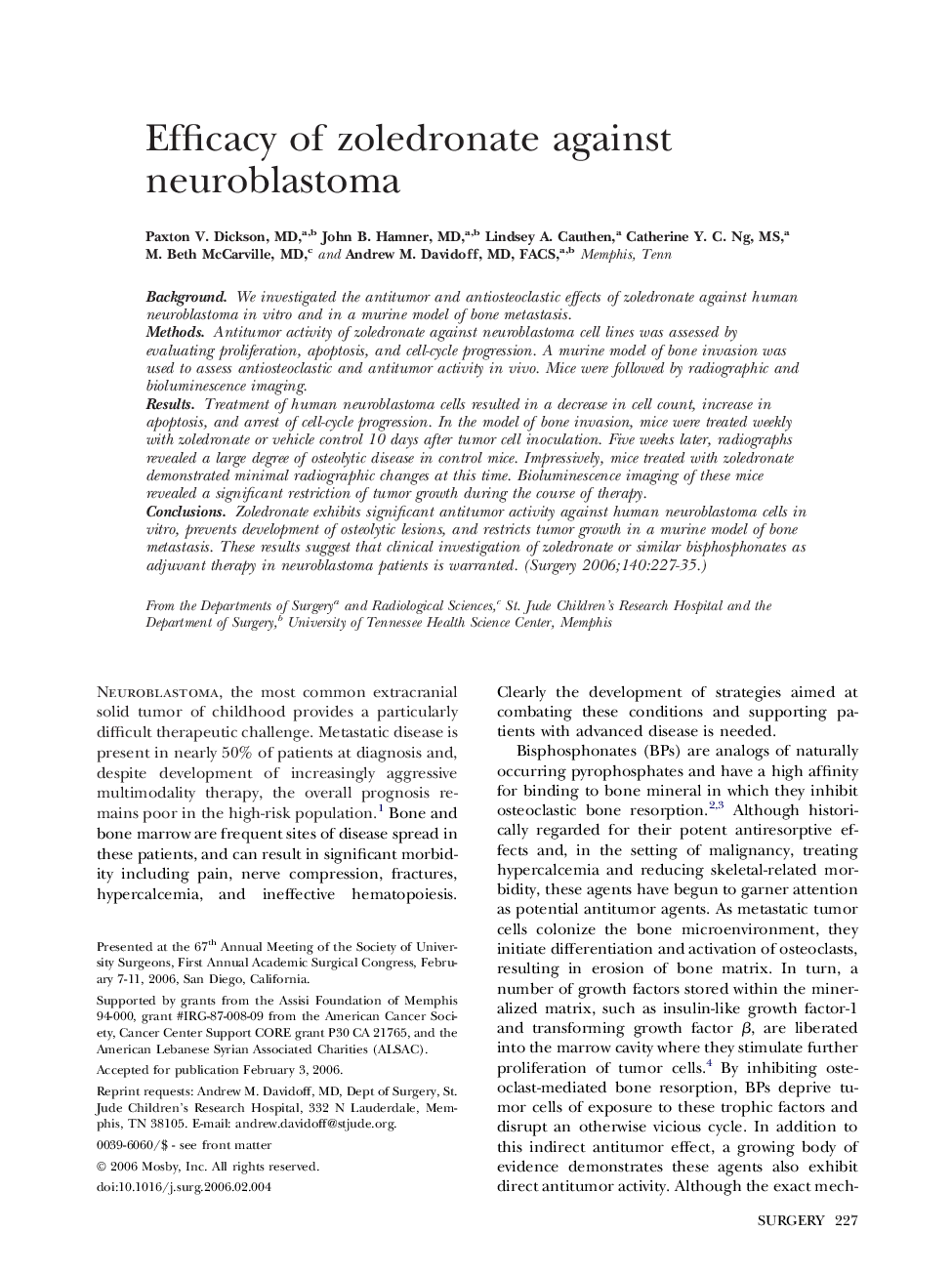| Article ID | Journal | Published Year | Pages | File Type |
|---|---|---|---|---|
| 4310007 | Surgery | 2006 | 9 Pages |
BackgroundWe investigated the antitumor and antiosteoclastic effects of zoledronate against human neuroblastoma in vitro and in a murine model of bone metastasis.MethodsAntitumor activity of zoledronate against neuroblastoma cell lines was assessed by evaluating proliferation, apoptosis, and cell-cycle progression. A murine model of bone invasion was used to assess antiosteoclastic and antitumor activity in vivo. Mice were followed by radiographic and bioluminescence imaging.ResultsTreatment of human neuroblastoma cells resulted in a decrease in cell count, increase in apoptosis, and arrest of cell-cycle progression. In the model of bone invasion, mice were treated weekly with zoledronate or vehicle control 10 days after tumor cell inoculation. Five weeks later, radiographs revealed a large degree of osteolytic disease in control mice. Impressively, mice treated with zoledronate demonstrated minimal radiographic changes at this time. Bioluminescence imaging of these mice revealed a significant restriction of tumor growth during the course of therapy.ConclusionsZoledronate exhibits significant antitumor activity against human neuroblastoma cells in vitro, prevents development of osteolytic lesions, and restricts tumor growth in a murine model of bone metastasis. These results suggest that clinical investigation of zoledronate or similar bisphosphonates as adjuvant therapy in neuroblastoma patients is warranted.
